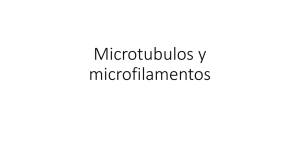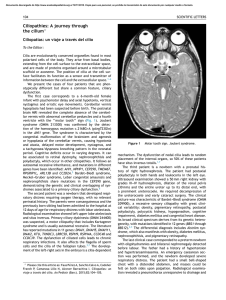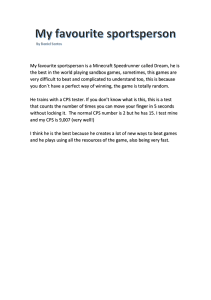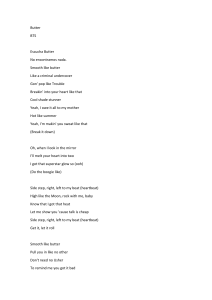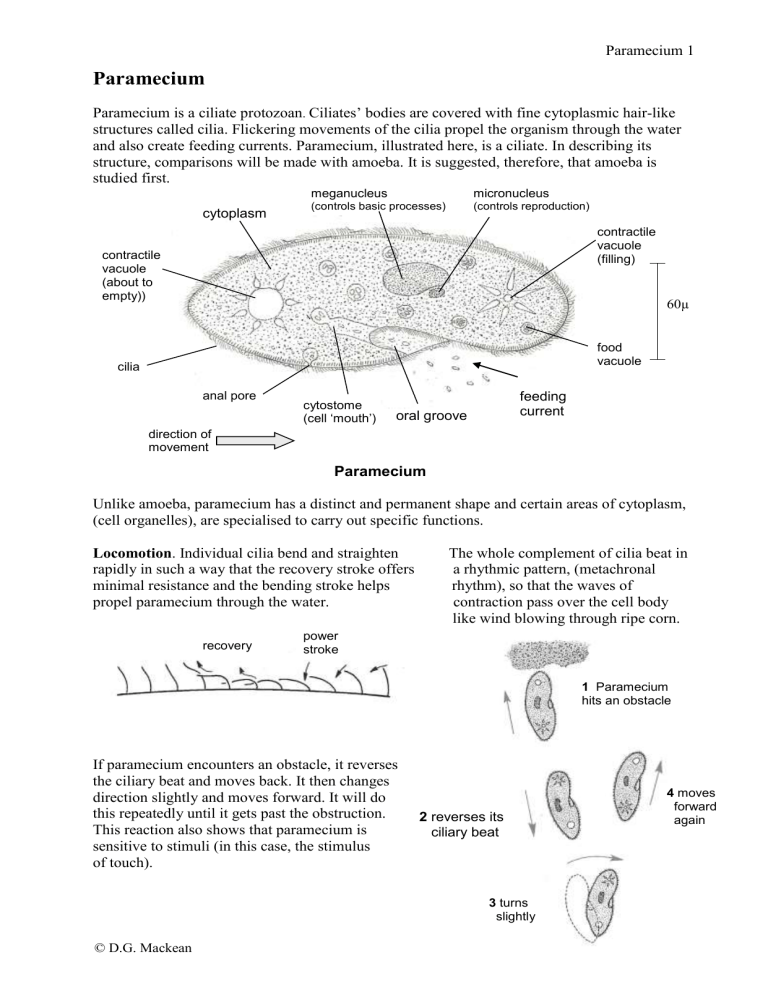
Paramecium 1 Paramecium Paramecium is a ciliate protozoan. Ciliates’ bodies are covered with fine cytoplasmic hair-like structures called cilia. Flickering movements of the cilia propel the organism through the water and also create feeding currents. Paramecium, illustrated here, is a ciliate. In describing its structure, comparisons will be made with amoeba. It is suggested, therefore, that amoeba is studied first. cytoplasm meganucleus micronucleus (controls basic processes) (controls reproduction) contractile vacuole (filling) contractile vacuole (about to empty)) 60µ food vacuole cilia anal pore cytostome (cell ‘mouth’) feeding current oral groove direction of movement Paramecium Unlike amoeba, paramecium has a distinct and permanent shape and certain areas of cytoplasm, (cell organelles), are specialised to carry out specific functions. Locomotion. Individual cilia bend and straighten rapidly in such a way that the recovery stroke offers minimal resistance and the bending stroke helps propel paramecium through the water. . recovery The whole complement of cilia beat in a rhythmic pattern, (metachronal rhythm), so that the waves of contraction pass over the cell body like wind blowing through ripe corn. power stroke 1 Paramecium hits an obstacle If paramecium encounters an obstacle, it reverses the ciliary beat and moves back. It then changes direction slightly and moves forward. It will do this repeatedly until it gets past the obstruction. This reaction also shows that paramecium is sensitive to stimuli (in this case, the stimulus of touch). 2 reverses its ciliary beat 3 turns slightly © D.G. Mackean 4 moves forward again
